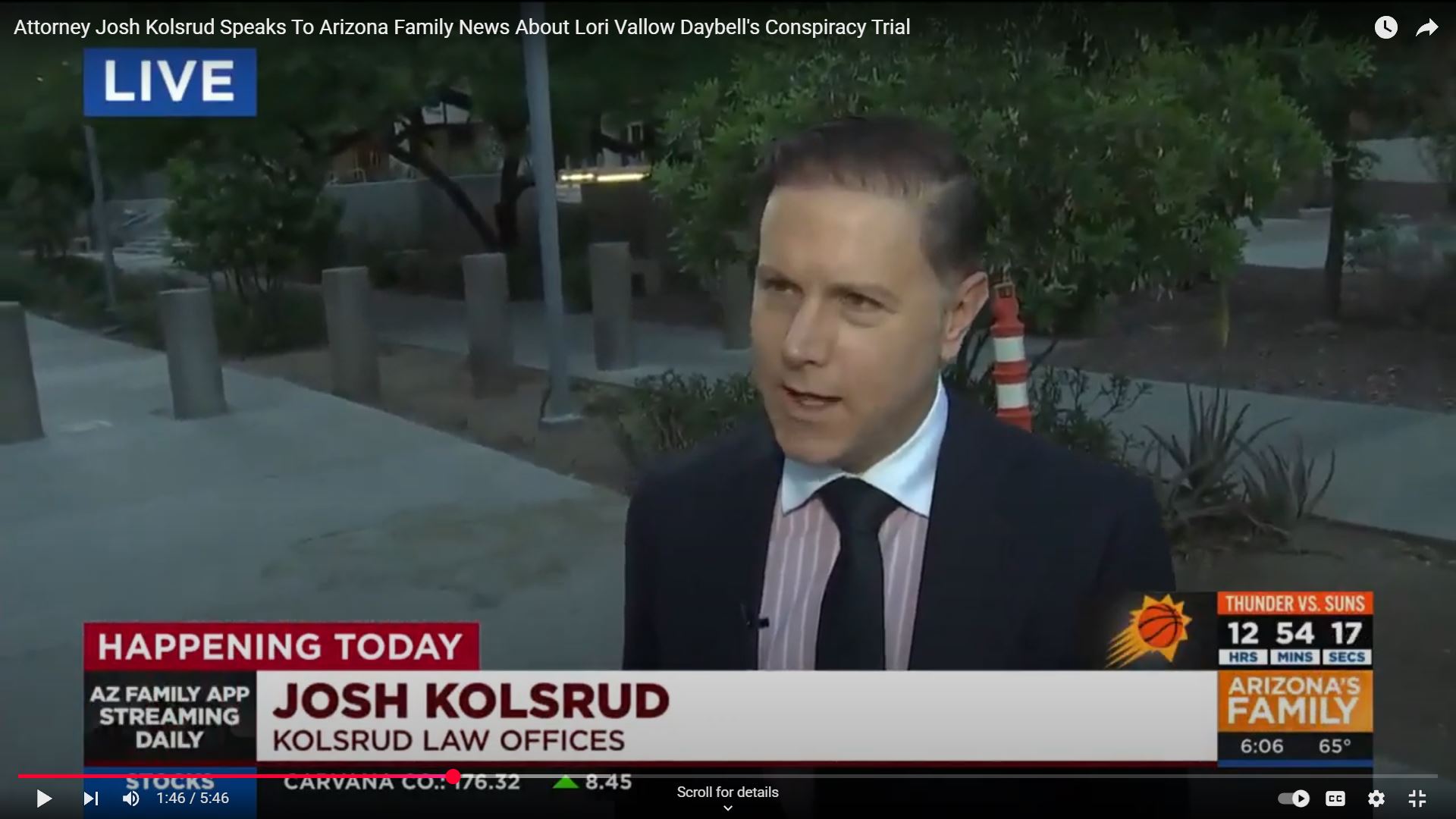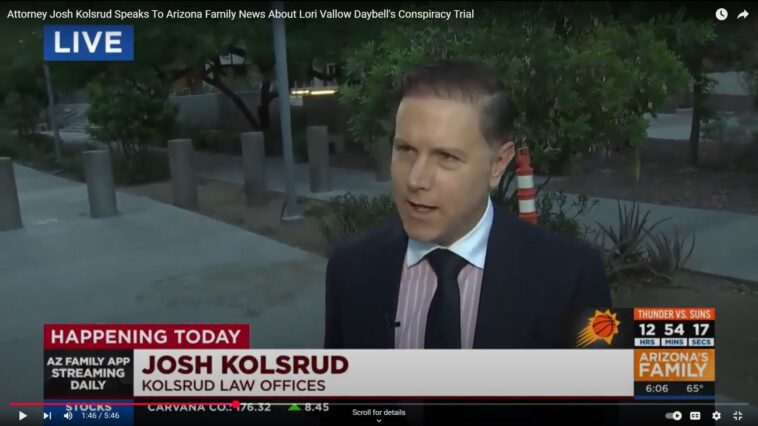
High-Profile Trial Under the Microscope: A Deep Dive into the Lori Vallow Daybell Case
The ongoing trial of Lori Vallow Daybell has captured national attention as details continue to emerge in a case layered with tangled issues, nerve-racking twists and turns, and a steady media spotlight. With a narrative that involves multiple states, a reported doomsday cult, and whispered allegations of insurance fraud and premeditated murder, this trial has quickly become a focal point for legal experts and the general public alike. In this opinion editorial, we take a closer look into the trial proceedings, legal strategies at work, and the impact of self-representation—all while bearing in mind the challenges that arise when sensationalism meets the courtroom.
Understanding the Background and the Case at Hand
At the center of the controversy is Lori Vallow Daybell, accused of conspiring with her brother, Alex Cox, to murder her fourth husband, Charles Vallow, for insurance money. The case kicked off when Alex Cox allegedly shot Charles Vallow in Chandler in 2019, invoking a self-defense claim that ultimately spared him from charges. However, with his subsequent death from natural causes, the case took an even darker turn. The complexity of events only deepened when Lori, along with her children Tyle and JJ, vanished briefly before relocation from Chandler to Idaho. Family members’ concerns evolved into a tragedy when remains were found on the property of her new husband, Chad Daybell, linking this case to further potential life sentences related to the deaths of her children.
This labyrinthine story is marked by a series of confusing bits, tricky parts, and overwhelming twists and turns that defy simple explanation. As the trial unfolds over an expected six-week period, legal professionals are questioning every detail—from the premeditation allegations against Lori to the authenticity of her self-defense claims. The court’s efforts to untangle these issues speak volumes about the broader challenges in managing such a sensational and nerve-racking case.
A Closer Look at Media Sensationalism and Public Scrutiny
One of the most fascinating aspects of the trial is how media scrutiny has played a significant role in shaping public perception about the case. Just as in previous high-profile cases, such as the infamous trial of Jodi Arias in 2013, the Lori Vallow Daybell trial has become a media magnet. Various outlets have portrayed the events in a dramatic light, emphasizing details like cross-state murder conspiracies and the controversial decision by Lori to represent herself in court.
This phenomenon raises important questions on how media portrayal might affect a trial. Sensational headlines and dramatic narratives could sway jury members or create an environment where facts get interwoven with speculative commentary. In lieu of this dynamic, legal experts stress the importance of letting the courtroom evidence speak for itself rather than relying on a narrative steeped in dramatization.
The Self-Representation Factor: Risk and Reward
A particularly notable element in this trial is Lori Vallow Daybell’s decision to act as her own attorney. Known colloquially as “a person who represents themselves has a fool for a client,” this approach is both controversial and intriguing. Despite the well-worn adage, Lori has exhibited excellent preparation—a polished courtroom presence, a well-rehearsed opening statement, and methodical cross-examination techniques have all been part of her self-representation.
However, the decision to represent oneself in a case loaded with nerve-racking details is far from straightforward. While it may come across as a display of confidence and determination, it equally raises concerns about missing out on the guidance of experienced legal counsel. Self-representation in cases of this magnitude is a double-edged sword, where the benefit of appearing prepared must be weighed against the pitfalls of managing the nitty-gritty on one’s own. This situation invites debate over the effectiveness of self-representation in courtrooms heated by media and public fervor.
Pros and Cons of Self-Representation in High-Profile Trials
- Pros:
- Enhanced personal control over the legal narrative
- An opportunity to present oneself confidently and authentically
- Potential for persuasive courtroom demeanor if adequately prepared
- Cons:
- Risk of mishandling the finer details and hidden complexities of legal arguments
- Potential to overlook subtle parts of legal strategies that could be crucial
- The danger of being overwhelmed by the courtroom process without experienced guidance
A Focus on Jury Prejudice and the Perils of Prior Case Influence
Another critical area of concern in this case is the risk of jury prejudice, specifically if jurors become aware of Lori’s previous legal history, including a past trial in Idaho under similar circumstances. This information, if leaked into the courtroom, might buckle the impartiality a fair trial demands. Defense attorney Josh Kolsrud has publicly warned about the dangers of previous convictions influencing current verdicts, particularly when sensitive details of past incarcerations or misconduct come to light.
During the trial, a notable incident occurred when Lori queried a key state witness regarding the materials he reviewed before testifying. The revelation that the witness had previously considered testimony from the related Idaho case introduces a nerve-racking potential for bias. The courtroom environment, already replete with confusing bits and unexpected twists, must now contend with an additional layer of pre-trial baggage that could skew the final outcome.
Key Measures to Prevent Jury Prejudice
| Measure | Description |
|---|---|
| Juror Instructions | Detailed directions must be issued to the jury to ignore any extraneous information from past cases. |
| Separate Hearings | Conducting sidebar sessions to manage potential bias related to previous trials. |
| Evidence Redaction | Careful redaction of references to past cases until firmly established in court proceedings. |
| Continuous Monitoring | Judicial oversight during testimony to identify and mitigate biased remarks if they arise. |
The Pivotal Role of Key Evidence: Challenging the Self-Defense Narrative
Central to the prosecution’s case is the evidence brought forth by a state-appointed reconstruction expert. This testimony, which scrutinizes the specifics of the shooting incident, is being hailed as potentially devastating for Lori’s self-defense argument. According to the expert’s analysis, the second bullet filched by the dynamics of the confrontation allegedly entered Charles Vallow’s abdomen while he was lying on his back—a detail that sharply contradicts any narrative of sudden, defensive action.
This evidence, which introduces a series of complicated pieces and fine points that the court must consider, leaves little room for the self-defense claim to stand strong. If proven unassailable, the expert’s deposition might drive the verdict toward a conviction. This shows how a single piece of evidence can uncover subtle differences between premeditated action and a spontaneous act of self-defense, making the final judgment critically dependent on the expert analysis.
Understanding the Evidence: Bullet Trajectory and its Implications
- Bullet Trajectory Analysis: Detailed forensic evaluation is essential in determining the angle and impact of the bullet, which could illustrate the shooter’s position and intent.
- Physical Positioning: Analysis of the victim’s position when shot—lying on his back versus in a defensive stance—can be pivotal in disproving self-defense claims.
- Expert Testimony: The insights drawn by forensic experts add a layer of factual clarity that often proves super important in a trial focused on minute details and little twists.
Balancing Media Influence with Courtroom Integrity
The trial’s coverage has shown how media sensationalism can steadily impact the legal process. While intense media attention might help in garnering public interest, it also holds the potential to subtly alter courtroom dynamics. The emotional charge that comes with high media exposure cannot be ignored, especially when every public statement or recorded interview might contribute to shaping a predetermined narrative.
Attorneys on both sides are thus confronted with the challenge of managing this overwhelming external influence while ensuring that every courtroom decision is governed solely by evidence and solid legal argument. The balance between managing public perception and ensuring a fair, unbiased judicial process serves as a masterclass in dealing with the hidden complexities of high-profile cases.
Strategies to Maintain Courtroom Integrity Amid Media Frenzy
- Strict Contempt Protocols: Courts implement strict measures to maintain order and insulate proceedings from external pressures.
- Controlled Media Access: Limited press interactions ensure that only verified information is disseminated to the public.
- Judicial Guidance: Judges frequently remind jurors of their duty to remain unbiased, focusing exclusively on in-court evidence.
Expert Insights from Josh Kolsrud: Balancing Experience and Public Expectations
Seasoned defense attorney Josh Kolsrud, with his 18 years of courtroom experience, recently offered a candid perspective on the trial’s developments. Drawing parallels to past celebrated cases, Kolsrud highlighted how public interest can sometimes overshadow the fundamental legal issues at hand. His observations underscore that while self-representation might appear to be a powerful message of personal control, it carries the risk of becoming a double-edged sword on a jury already burdened by confusing bits and troubling twists.
Kolsrud pointed out that the polished delivery and well-rehearsed tactics displayed by Lori should not confuse the jury into misinterpreting the evidence presented. In his view, her confident demeanor might sway jury sympathy, but the physical evidence, particularly the forensic testimony regarding bullet trajectory, remains super important in dictating the trial’s outcome.
Key Lessons from Josh Kolsrud’s Observations
- Preparation vs. Representation: Being well-prepared does not automatically equate to having the tactical expertise that experienced legal counsel offers.
- Media vs. Evidence: While media narratives often amplify dramatic aspects, a verdict based on solid forensic evidence and careful cross-examination is what truly matters.
- Jury Bias Concerns: Even subtle references to past legal troubles can create an environment where genuine facts are overshadowed by pre-existing prejudices.
Legal Strategy and the Art of Saying “The Truth” in Court
The Lori Vallow Daybell trial is not just a battle over guilt or innocence—it is a case replete with legal debates about the very foundation of justice. On one hand, the prosecution is working diligently to show that Charles Vallow’s death was a premeditated act, using fine points from forensic testimony. On the other, the defense’s reliance on a well-crafted self-defense narrative displays the nerve-racking high-wire act of managing evidence, media narratives, and public perception.
In any trial, especially one as loaded with issues as this, constructing a robust legal strategy means not only presenting physical evidence but also ensuring that the jury remains insulated from the distractions posed by media sensationalism. The challenge here is to convince the jury that in the tangled maze of evidence and legal arguments lie subtle details that speak to a planned act rather than a spontaneous defense.
Tactics in Modern High-Profile Trials
- Expert Testimonies: Leveraging the insights of forensic experts to present a comprehensive picture of the incident.
- Cross-Examination: Employing tactical cross-examination methods that uncover hidden complexities and force clarity on the critical moments of the event.
- Media Management: Strategically countering public narratives with methodically presented courtroom evidence, ensuring that every detail is examined in the proper legal context.
Public Opinion and Its Role in Legal Proceedings
High-stakes trials inevitably stir public debate. This case, in particular, has created a polarizing effect on public opinion, with some segments of society rallying around the idea of self-representation as a symbol of personal autonomy, while others view it as a stark indicator of inadequate legal judgment. The court of public opinion can be just as nerve-wracking as the actual courtroom, stressing the importance of distinguishing media dramatics from authentic legal scrutiny.
It is clear that for those watching closely—a mix of legal experts, concerned citizens, and media aficionados—the outcome of this trial is more than just a verdict. It is a litmus test for the American legal system’s ability to remain objective and just in the face of overwhelming external pressures and sensational reporting.
Impact of Public Debate on Legal Outcomes
- Public Pressure: Media and public scrutiny can drive the justice system to operate with enhanced vigilance to maintain fairness.
- Institutional Response: Courts adopt various measures to counteract biases introduced by excessive publicity, ensuring that every verdict is based solely on developed evidence.
- Long-Term Implications: The case sets precedents in how future high-profile and self-represented cases are managed within the framework of modern law.
Examining the Hidden Complexities of Self-Representation in a Media-Loaded Environment
The decision made by Lori Vallow Daybell to represent herself in a trial of this magnitude is polarizing and illuminates the theater of legal self-representation. On one hand, her deliberate choice and apparent preparation have stirred debate about how individuals can sometimes manage getting around the system’s tricky parts. On the other, it has raised substantial questions about the importance of professional legal counsel when confronted with overwhelming evidence and a labyrinth of questioning twists and turns.
This fusion of self-confidence and potential strategic missteps is emblematic of a modern legal dilemma—balancing personal autonomy against the stern requirements of effective legal defense in situations that are loaded with issues. While some laud the move as an admirable sign of personal empowerment, others believe it might ultimately work against the defendant should the finer details of her case be laid bare in the courtroom.
The Role of Legal Strategy in Self-Representation
- Preparation is Key: Even when representing oneself, a rigorous understanding of legal procedures and an ability to make the most of expert testimony are super important.
- Risk Assessment: Weighing the benefits of a personalized defense against the risk of missing critical legal argument points can define the trajectory of a trial.
- Expert Guidance: While self-representation can seem admirable, the hidden complexities of procedural law demand additional oversight to ensure that no critical detail is overlooked.
The Road Ahead: Current Challenges and Future Outcomes
As the trial moves deeper into its six-week schedule, several nerve-racking challenges persist. Key questions loom: Will the forensic evidence dismantle the self-defense narrative? Can legal professionals sort out the abundant media noise and bias? And importantly, will the jury manage to set aside any preconceptions coming from previous legal controversies?
These questions remain partly unanswered as both sides of the argument continue to present their cases. The mixed environment, combining dramatic courtroom moments with scientific testimony and media narratives, is indicative of how modern trials are evolving to meet new challenges. It is a reality where every piece of evidence, every subtle detail, and every tiny twist can tip the scales of justice.
Predicted Trajectories for the Trial
- Intense Forensic Scrutiny: Expect further detailed analysis from forensic experts regarding bullet trajectories and the precise physical positioning during the incident.
- Media Influence Mitigation: Continued efforts will be made to insulate the jury from pretrial biases, ensuring that decisions are rooted firmly in the evidence presented in the courtroom.
- Strategic Legal Maneuvers: Both the defense and prosecution are likely to adapt their strategies based on emerging details, reinforcing the need for agility in managing high-profile cases.
Conclusion: Balancing Truth and Sensationalism in the Pursuit of Justice
The Lori Vallow Daybell trial stands as a testament to the ever-evolving legal landscape—a landscape determined by nerve-racking challenges, tangled issues, and a barrage of public and media attention. As we watch this case unfold, the importance of relying on solid forensic evidence, maintaining courtroom decorum, and ensuring an unbiased jury cannot be overstated.
Whether it is through the lens of self-representation or traditional legal counsel, the hidden issues of each case must be managed carefully to ensure that the pursuit of truth supersedes the dramatics of media narratives. The trial forces us to confront deep questions about how legal systems should function in an age where every detail is micromanaged not only by legal professionals but also by a voracious media network keen to highlight every twist and turn.
Ultimately, this case challenges us to figure a path through the distracting noise of sensational headlines and focus on the key evidence and legal details that will decide the fate of those involved. It is a reminder that justice must be served based solely on meticulously scrutinized facts rather than the drama of public opinion.
As we continue to follow this nerve-racking trial, one thing remains clear: the journey through the maze of legal details and media influence is as much a test of the American judicial system as it is a story of personal fate. For legal observers and members of the public alike, the case offers a sobering look at the toll that high-profile legal battles can take on all parties involved.
The outcomes of this trial could well set the stage for future debates on self-representation, media bias, and the balancing act required to ensure a fair trial. It serves as a reminder that while the media may shape the narrative, the courtroom, with its careful presentation of expert evidence and cross-examination, is where the true story unfolds. As legal professionals and observers dig into the unfolding events, the need to maintain an unbiased perspective remains super important for protecting the presumption of fairness that is the cornerstone of justice.
In the end, the Lori Vallow Daybell trial is more than just a headline. It represents a critical juncture where the enthusiasm of personal autonomy is pitted against the sobering reality of legal procedures. The outcome will not only impact those directly involved but may also reverberate through the legal community, prompting reflections on how best to balance personal rights with the deeper responsibilities held by the judicial system.
For anyone following high-profile legal battles, this case remains a powerful reminder of the nerve-racking, complicated pieces that converge in our modern courtrooms. It is a story of drama, evidence, and the endless struggle to find truth amidst overwhelming external influences—a struggle that continues to test the limits of our legal system every day.
Read more about this topic at https://kolsrudlawoffices.com/josh-speaks-with-az-news-about-lori-vallow-daybells-trial/
Related articles you might like
Burr Conspiracy Trial (1807)
Attorney Josh Kolsrud Discusses Day 4 of The Lori Vallow …


